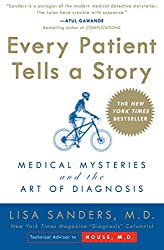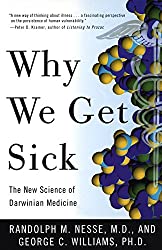
Rating: 9.0/10.
History and science of malaria, a disease that has been around for 500,000 years and is still a problem today, even though many infectious diseases have been eradicated. Malaria is caused by a protozoan parasite that feeds on red blood cells, it’s transmitted by mosquitos. After millennia of co-existence with humans, the parasite and our immune system have evolved many defenses and counter-defenses, for example: it hides in the liver to evade detection, and the sickle cell anemia gene provides defense against malaria.
Malaria has shaped history in many occasions: natives from malaria-endemic regions have acquired some degree of built-in immunity and rarely die from it, whereas white colonizers had no immunity and died frequently. This prevented white people from venturing deep into Africa, and a Scottish colony in Panama was doomed because everybody got sick. Conversely, human activity affects malaria as well — malaria spreads when mosquitos have pools of stagnant water to lay their eggs. These conditions can be inadvertently created through land development, seasonality, climate change, etc.
Quinine (extracted from cinchona trees) was the first effective remedy for malaria, but supply was limited because it was difficult to grow. During WW2, synthetic quinacrine was developed, but the pathogens soon gained resistance. In the 70s, artemisinin was extracted from traditional Chinese medicine (one of the few success cases) but the parasite developed resistance to that as well, partially because Novartis made it too expensive and people used reduced doses, which leads to resistance. Currently the recommended treatment is artemisinin combination therapy, basically hitting it with a bunch of antimalarial drugs at the same time.
People in malaria-endemic countries often don’t consider it a particularly serious disease, since 99% of the time you don’t die from it, so public funding and interest is generally unstable. Still, it causes a lot of productivity loss as sick people are unable to work, one of the reasons for poverty. An effective counter is filling in ponds of stagnant water, which is how malaria was eradicated in the west; this is not feasible in tropical countries though. In the 50s, they attempted to use DDT to eradicate mosquitos; this was discontinued after birds were reported dying of DDT bioaccumulation. Still, many experts believe that DDT shouldn’t have been banned since the benefits outweigh the costs.
What’s next for malaria? The community is divided on whether complete eradication is a realistic goal; aiming long term control is more feasible. There will be no one-shot silver bullet solution, because in the past, every time the parasite soon develops resistance. Insecticide-treated mosquito nets are cost-effective, combined with medication and ecological reform, but it will be a long, slow battle.



